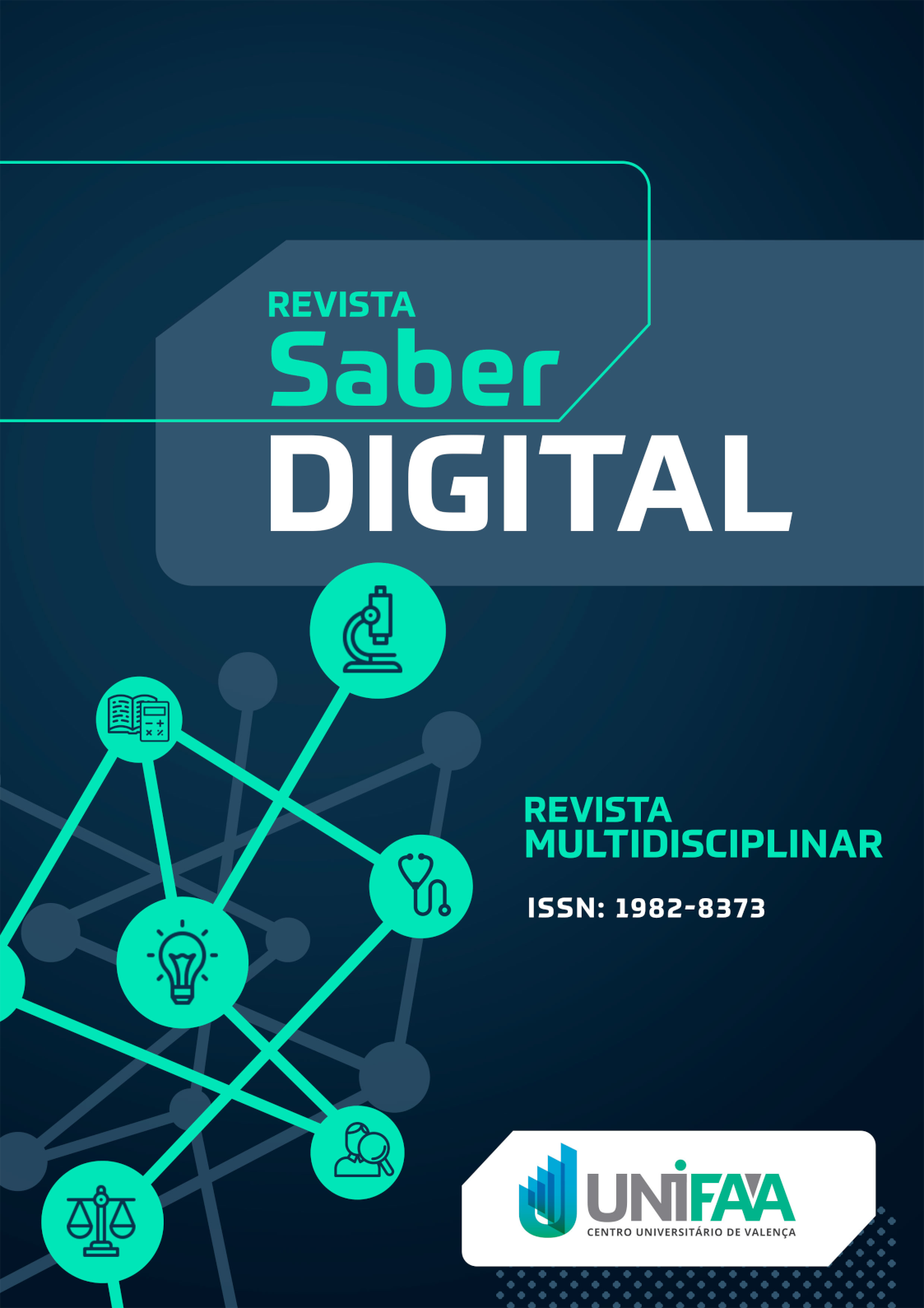Primary care as the preferred entry door to the health care network. Perception of residents assisted by a community project
DOI:
https://doi.org/10.24859/SaberDigital.2024v17n2.1527Keywords:
Primary attention, Basic Health Care, Medical Education, MedicineAbstract
Introduction: Primary Health Care (PHC) constitutes preferential access to the Unified Health System (SUS), as it represents the first level of health care in the service network. Approximately 80 to 85% of health needs can be resolved by teams working at this level of care. However, for this care resolution to be fulfilled, it is essential that the population is aware that PHC is the preferred gateway to the SUS. When access to services occurs in this hierarchy, a possible overload on services with greater technological complexity is avoided due to the care of users with problems that could have been solved in PHC. Objective: This present study aims to verify the perception of residents assisted by the “Community Project” about the possible reasons for not using PHC as a preferred gateway to the Health Care Network (RAS). Methodology: Quantitative research was carried out. The data sampled residents of the localities Itakamosi and Massambará, in the municipality of Vassouras, and residents of the Prata da Ponte and Plante Café neighborhoods, in the municipality of Miguel Pereira, who participate in the “Community Project”. The research was developed using a structured instrument and adapted to the questionnaire made by Paes KSM, Nascimento JC, Negrini LO 10. Results and discussion: The sample was composed of 84 residents, with the majority of participants attaching high importance to the hospital compared to the Primary Care and the Emergency Care Unit. When asked about the ability of the Basic Health Unit to solve their problems and those of their families, 44% judged it to be high, 50% medium and 6% low. Regarding the correct definition of the Unified Health System, it was chosen by only 58.3% of participants, the others stated that they did not know the definition of the SUS and its functioning or chose the wrong option. Conclusion: The results obtained indicate that, despite there being a reasonable appreciation of the UBS's ability to resolve health issues, there is still a portion of the population that may underestimate or not fully recognize the fundamental role of Primary Care, which creates an overload of professionals. other levels of Health Care.
Downloads
References
BODENHEIMER T. Coordinating care: a perilous journey through the Health Care System. The New England Journal of Medicine, v.358, n.10, p. 1064-1071, 2008. DOI: https://doi.org/10.1056/NEJMhpr0706165
BRASIL. Ministério da Educação. Diretrizes Nacionais para os Cursos de Graduação em Medicina. Resolução nº 3, 2014.
BULGARELLI, P. T. et al. A perspectiva do usuário sobre o acesso aos serviços da atenção primária à saúde. Tempus Actas de Saúde Coletiva, v. 11, n. 3, p. 216, 2018. DOI: https://doi.org/10.18569/tempus.v11i3.2443
CHAGAS, H. M. D. A.; VASCONCELLOS, M. D. P. C. Quando a porta de entrada não resolve: análise das unidades de saúde da família no município de Rio Branco, Acre. Saúde e Sociedade, v. 22, n. 2, p. 377-388, 2013. DOI: https://doi.org/10.1590/S0104-12902013000200010
GUSSO, G. et al.Tratado de Medicina de Família e Comunidade: princípios, formação e prática. 2.ed. v.1 e 2. Porto Alegre: Artmed, 2018. p. 2432.
MCINTYRE, D.; MOONEY, G. The Economics of Health Equity. 1. ed. New York: Cambridge University Press, 2007. DOI: https://doi.org/10.1017/CBO9780511544460
MOTA PAES, K. D. S.; NASCIMENTO, J. C. D.; DE OLIVEIRA NEGRINI, L. D. O uso da atenção intermediária como porta de entrada preferencial ao SUS: a percepção dos usuários classificados como não urgentes na UPA 24 horas Dr. Valdir de Camargo, Bragança Paulista, SP. Ensaios USF, v. 2, n. 2, p.1-13, 2019. DOI: https://doi.org/10.24933/eusf.v2i2.48
PAIM, S. J. O que é o SUS. 1. ed. Rio de Janeiro: Editora Fiocruz, 2009. p.11-89. DOI: https://doi.org/10.7476/9788575413425
SANCHEZ, R. M.; CICONELLI, R. M. Conceitos de acesso à saúde. Revista Panamericana de Salud Pública. Washington, v.31, n.3, p. 260-268, 2012. DOI: https://doi.org/10.1590/S1020-49892012000300012
STARFIELD, B. Atenção primária: equilíbrio entre necessidades de saúde, serviços e tecnologia. 3. ed. Brasília: UNESCO, Ministério da Saúde, 2002. p. 726.
UNIVERSIDADE DE VASSOURAS. Curso de Graduação em Medicina. Projeto Pedagógico do Curso. Vassouras, 2019.
Downloads
Published
How to Cite
Issue
Section
License
Copyright (c) 2024 Camila dos Santos Marotta , Camila Carolina Valero Guandalini, Emilia Aurea Alves Rodrigues, Karina Santos de Faria, Maria Cristina Almeida de Souza

This work is licensed under a Creative Commons Attribution-NonCommercial 4.0 International License.
Declaração de Direito Autoral
Autores que publicam na Revista Saber Digital concordam com os seguintes termos:
Os autores mantêm os direitos e cedem à revista o direito à primeira publicação, simultaneamente submetido a uma licença Creative Commons que permite o compartilhamento por terceiros com a devida menção ao autor e à primeira publicação pela Revista Saber Digital.
Os autores podem entrar em acordos contratuais adicionais e separados para a distribuição não exclusiva da versão publicada da obra (por exemplo, postá-la em um repositório institucional ou publicá-la em um livro), com o reconhecimento de sua publicação inicial na Revista Saber Digital.

Este obra está licenciado com uma Licença https://creativecommons.org/licenses/by-nc/4.0/













